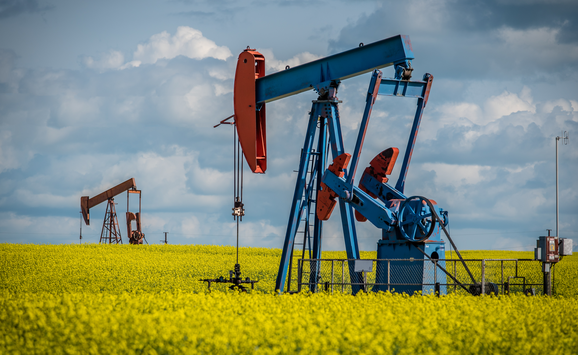When we think about a “just transition” for workers and communities likely to face challenges in a low- or net-zero-emissions future, we often think about economic development policy, workforce development policy, or other programs that can help diversify or grow regional economies. But these policies can’t be effective unless other basic conditions are met.
For example, any local economic development strategy will fall flat if that community doesn’t provide clean and affordable drinking water to its residents. It will fall flat if that community lacks access to highways, rail, or other transportation networks. And it will fall flat if the community’s land is too polluted to develop.
In a new report—the second in an ongoing series in collaboration with Environmental Defense Fund—I examine how existing federal programs that focus on environmental remediation and infrastructure might play a role in a just transition for workers and communities that rely on fossil energy production, processing, or use as their economic backbone. Because dozens, if not hundreds, of programs could be relevant here, I focus on the biggest of the bunch, shown below in Table 1.
DOE = Department of Energy; DOI = Department of Interior; DOT = Department of Transportation; EPA = Environmental Protection Agency; HUD = Department of Housing and Urban Development; IRS = Internal Revenue Service
There’s a lot to cover here and, to be clear, I am not by any means the world’s leading expert on environmental remediation technologies or infrastructure planning. Still, the complex and interrelated challenges that rural energy communities are likely to face during an energy transition require us to think broadly about potential solutions.
So, what lessons—if any—do these programs provide for fossil energy workers and communities facing an uncertain future? I encourage you to check out the full report for details, but here are a few key takeaways:
Finding the Right Match Between Jobs and Skills
Although the dominant focus for many policymakers and local stakeholders is the question of jobs, there’s little empirical research that can help us understand the effects of government investment in infrastructure and environmental cleanup.
To be sure, there are plenty of static “input-output” models that will spit out a number estimating the number of direct, indirect, and induced jobs created by a given level of investment, whether for a highway, a rail project, or a Superfund cleanup. But these models don’t account for the complex ways that workers and investment flow through the economy over time, and they don’t account for how investment (and jobs) in one project might affect investment (and jobs) for another project in that same region, let alone the economy writ large. But here are a couple of things we do know about jobs, and a couple questions that need better answers:
- Millions of sites in the United States need various levels of environmental remediation. In particular, water pollution caused by coal mining and coal combustion residuals creates risk for residents in dozens, or perhaps even hundreds, of communities across the country. In some cases, the skills and equipment necessary to clean up sites (e.g., heavy earthmoving) roughly align with the existing skills of coal workers. Cleaning up these sites would put people to work, at least temporarily, and lay two cornerstones for any future prosperity: clean water and land.
- Other federal remediation efforts, such as the US Environmental Protection Agency’s Superfund and Brownfields programs, appear to produce jobs at relatively low cost. However, it’s not clear whether these jobs support local workers, or if they’re typically filled by imported labor.
- Ample evidence shows that cleaning up polluted sites increases nearby property values. In addition, remediating polluted sites in minority communities has the potential to help address a legacy of environmental injustice. At the same time, decisions about cleaning up polluted sites can be fraught. Some evidence shows that remediation programs have prioritized cleanups in whiter communities, and remediation that raises property values in minority communities could contribute to “environmental gentrification.”
Time for Infrastructure Week?
Another barrier to economic diversification for many rural, energy-producing communities is access to interstate transportation networks. Whether they’re coal mining communities in the hollows of Appalachia, coal-fired power plant towns in the Intermountain West, or isolated oil towns in North Dakota, many fossil energy communities have limited access to necessary transportation infrastructure. For these communities, economic diversification efforts would be greatly enhanced by improving access to consumers, whether the goal is to expand tourism, manufacturing, or other sectors. Here are two lessons, and one big question, regarding the role of infrastructure in a just transition:
- Economists have debated whether infrastructure investment—particularly for highways—increases overall economic activity or simply redistributes that activity. Although the former outcome is clearly preferable across society, the latter may also be valuable in the context of a just transition if new infrastructure serves the communities that may be negatively affected by a shift away from fossil energy.
- Low-income areas and communities of color have experienced environmental injustices often related to the siting, maintenance, or administration of public infrastructure. The design, implementation, and enforcement of policies will shape whether, and to what extent, future infrastructure spending reduces or exacerbates historical inequities.
- Although it’s clear that many energy communities would benefit from new transportation infrastructure investment, it is not clear how to prioritize that investment across space and time. In other words: we know infrastructure can help, but it’s not clear where to invest to get the best “bang for the buck.”
Forthcoming reports in our “Fairness for Workers and Communities in Transition” series will address other policies that may be part of the mix, including workforce development and social “safety net” programs like unemployment insurance. Stay tuned for more to come from me and my colleagues at Resources for the Future and Environmental Defense Fund.






